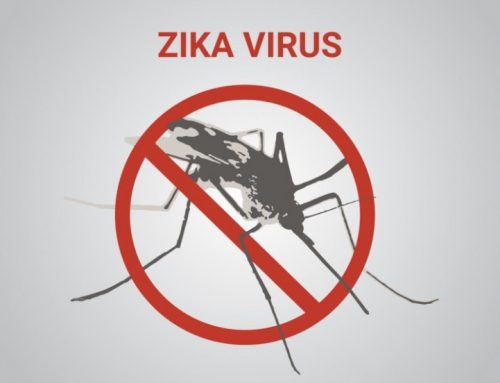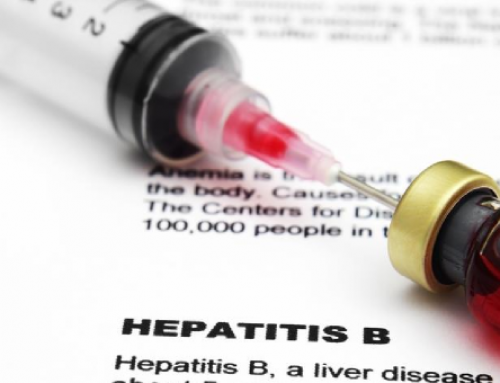About a year ago I was asked to take a TB skin test as part of the application process for a job at a psychiatric hospital. If you’ve never had one before, a TB skin test is a test where a doctor injects a small amount of tuberculin (TB protein) under the surface of the skin of your arm to test whether or not you are infected with the tuberculosis bacterium. You usually have to go back to your doctor the next day (or after 48 to 72 hours) so that he or she can see if you have a reaction at the injection site, like a bump. The size and appearance of the bump can determine whether you are positive or negative for TB.
I will admit that prior to this test, I never really thought of tuberculosis as a modern disease. I thought of it the same way I think about diseases like smallpox and polio – as a disease that had been cured or eradicated a long time ago and was no longer a real threat. When I thought of tuberculosis, I imagined famous Victorian authors coughing up blood into handkerchiefs while scribbling away literary masterpieces; or porches lined with the beds of tuberculosis patients in sanatoriums that I had seen in old photographs. These were the images of tuberculosis for me – not exactly images of a disease that is still very active today.
Thankfully, my test for TB was negative, but my experience with the TB skin test got me thinking about tuberculosis in the present day world. The fact that I had been required to be tested for TB clearly indicated that the psychiatric hospital thought it was a threat, and I began to notice that a lot of TV commercials for prescription medications would say things like “Tell your doctor if you’ve ever had TB” or “Talk to your doctor about infections like TB.” I had never really paid attention before, but I suddenly started listening to these references with renewed interest. I decided to do a little research just to get a general sense of the impact of tuberculosis today.
TB: Eternally Thriving
It’s really mind-blowing to contemplate how long (as in number of years) tuberculosis and humankind have been involved with each other – scientists estimate that the tuberculosis bacterium has been around since ancient times and traces of it have even been found in Egyptian mummies. This means that tuberculosis has been present throughout all the years of the progress and advancement of the human race, making it one of humankind’s oldest bacterial foes.
Tuberculosis is a bacterial infection caused by the bacterium Mycobacterium tuberculosis. TB can occur anywhere in the body but usually attacks the lungs (pulmonary tuberculosis). TB particles are spread through the air when an infected person coughs, sneezes, sings, or even speaks, so it is easy to see how it thrives in conditions of crowding such as nursing homes, boarding schools, prisons, and homeless communities. As the bacterium begins multiplying in the body and destroying tissue, it causes symptoms such as a bad, persistent cough, fatigue/loss of energy, weight loss, loss of appetite, chills, fever, drenching night sweats, chest pain, and coughing up or spitting up bright red blood, a symptom that occurs when the blood vessels inside the lungs become eroded and begin to bleed.
Untreated, tuberculosis is usually fatal and the disease is responsible for killing countless people in prior centuries before the M. tuberculosis bacterium was discovered and vaccines and antibiotics were developed to fight it. Known as “Consumption,” “Phthisis,” and “The White Plague,” Tuberculosis was the leading cause of death for people of all ages in the 18th and 19th centuries (1700s and 1800s).
Tuberculosis Today
The tuberculosis bacterium was discovered by Robert Koch in 1882 and this was considered a major breakthrough. Koch was awarded the Nobel Prize in 1905. Since that time, the development of antibiotics has increased the rate of survival among infected persons and rates of the disease in the United States are declining. Today, tuberculosis is largely treatable and curable with the right course of antibiotics, but the disease has not been completely eradicated and continues to be a major health concern in developing countries and among those infected with HIV. In addition, antibiotic treatment that has not been completely successful has led to the development of Drug-Resistant TB. Tuberculosis remains one of the most common and deadliest infectious diseases worldwide.
Global TB
The progress that has been made in eliminating TB in the United States has not been mirrored in many other areas of the world. The malnutrition, poor sanitation, crowding, lack of available antibiotics, and lack of quality healthcare in a number of other countries have ensured that TB continues to thrive.
In 2013, 64% of all TB cases and 91% of all Multidrug-Resistant TB cases in the United States occurred among people who had been born in other countries and had traveled to the US.
Nearly 9 million people worldwide become sick with TB each year and nearly 2 million die from the disease.
The following 22 countries are considered high burden countries for TB and account for 80% of TB cases worldwide: Afghanistan, Bangladesh, Brazil, Cambodia, China, Democratic Republic of Congo, Ethiopia, India, Indonesia, Kenya, Mozambique, Myanmar, Nigeria, Pakistan, Philippines, Russia, South Africa, United Republic of Tanzania, Thailand, Uganda, Vietnam, and Zimbabwe.
TB and HIV
TB is a leading cause of death for people infected with HIV worldwide. HIV weakens the immune system and makes it more difficult for HIV-infected people to fight off the TB bacterium, so it is easier for HIV-infected people to catch TB than it is for the general population. Untreated, TB and HIV can work together to significantly shorten a person’s lifespan.
TB in HIV-infected people is treatable, but the problem is that many HIV-infected people don’t know they have TB, never get tested, or don’t have access to quality healthcare and the proper drugs to treat TB.
Drug-Resistant TB: A Costly Problem
Drug-Resistant TB occurs when the drugs used to treat TB are mismanaged or misused. As a result, the TB bacterium is not completely killed inside the bodies of those treated. This can cause the remaining bacterium to come back stronger with a resistance to the drugs used to treat TB, which means that those drugs will no longer work to kill the bacterium.
Multidrug-Resistant TB (MDR-TB) and Extensively Drug-Resistant TB (XDR-TB) are forms of drug-resistant TB. MDR-TB is resistant to the two most powerful drugs used to treat TB and XDR-TB is resistant to at least three different TB drugs.
Drug-Resistant TB usually occurs when the following situations are present:
- When patients do not complete the full course of their TB treatment
- When health care providers prescribe the wrong drugs, the wrong dosages, or the wrong length of time for taking the drugs
- When the supply of drugs is not available
- When the drugs are of poor quality
- When patients do not take their TB drugs regularly
- When patients live in areas with high rates of drug-resistant TB
Treatment for the different types of drug-resistant TB is very expensive (ranges from $260,000 to around $430,000 depending on the type), takes a long time to complete, and has difficult and potentially life-threatening side effects such as depression or psychosis, hearing loss, hepatitis, kidney problems, loss of mobility, and vision impairment.
Ensuring that patients are quickly diagnosed and treated effectively by competent doctors who are knowledgeable about how to treat TB are two of the best ways to prevent drug-resistant TB. Another great prevention method is working toward the improvement of global diagnosis and treatment of TB.
Conclusion
I couldn’t believe how much information I learned about TB with just a few clicks of my mouse. The amount of information that exists concerning TB, its history, diagnosis, treatment, and social impact is huge and it would be impossible to include all of it in this post. Needless to say, I realized my ignorance in assuming that TB had been eradicated and was no longer a threat. One of the most important things I learned in researching tuberculosis is that no one should ever become complacent when it comes to infectious diseases and just assume that they are no longer dangerous.
Diseases like tuberculosis are always lurking around, and even when measures are taken to stamp them out, they can still come back if we let down our guard. So the next time your doctor or your job asks you to take a TB skin test, take a moment to think about the importance of what you are doing – you are participating in the process of testing for one of the world’s deadliest bacterial enemies, a disease that is older than everyone currently alive in the world today, and a disease that has taken down both rulers and beggars alike. It’s really amazing to think about.
Sources: Centers for Disease Control, New Jersey Medical School Global Tuberculosis Institute, Encyclopaedia Britannica, Hektoen International: A Journal of Medical Humanities (Tuberculosis article written by Mindy A. Schwartz, MD), Stop TB Partnership




Leave A Comment
You must be logged in to post a comment.